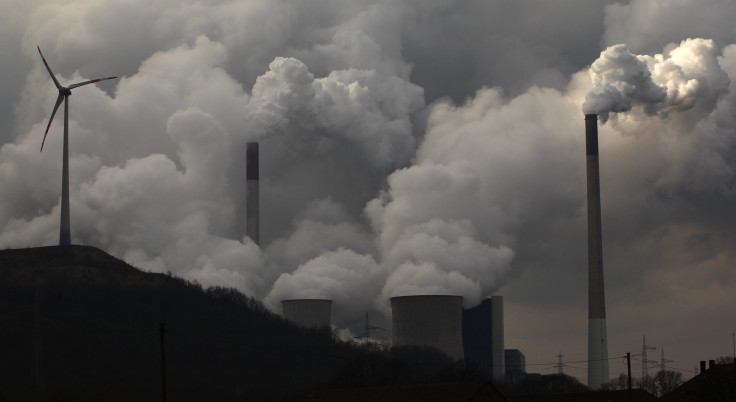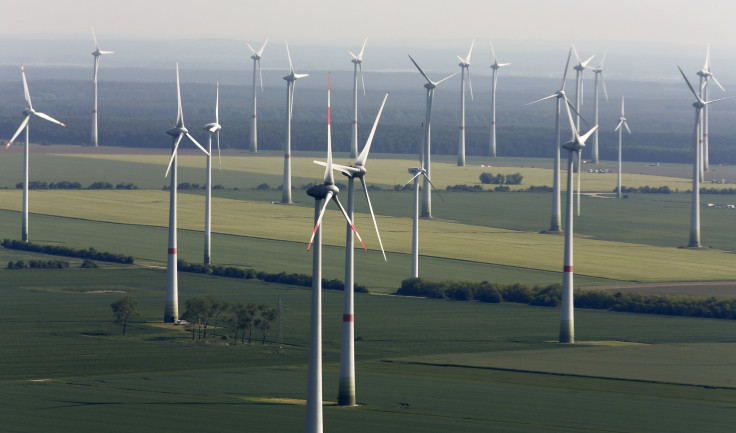Climate Change 2014: UN Climate Summit In New York Comes At Critical Point In Fight To Reduce Emissions

For residents of the Marshall Islands, normal life is disappearing. The Pacific Ocean’s encroaching waters are wiping away beaches and poisoning drinking water. Crops are shriveling amid persistent drought, and massive floods have forced thousands of people from their homes. “Life is quickly becoming like living in a war zone,” Tony de Brum, the island nation’s foreign affairs minister, says. “For us, climate change is not a distant threat. It has already arrived.” De Brum is one of hundreds of government officials gathering in New York City this week for a triple-header of climate events.
On Sunday, some 400,000 people marched along Manhattan's west side in what is being called the biggest climate demonstration in history. Monday marks the kick-off to Climate Week NYC, an annual forum to promote the business case for a low-carbon economy. A U.N.-led summit Tuesday will be the largest gathering of its kind in five years. Organizers say they hope it can revive a languishing effort to commit the world’s countries to reducing dangerous greenhouse gas emissions.
The efforts come at a critical point in the climate fight. The 1997 Kyoto Protocol, the first international agreement to reduce emissions, expired two years ago with little discernable impact. (The United States signed the treaty, but never ratified it.) Attempts to negotiate a successor treaty collapsed in 2009 at the U.N. climate talks in Copenhagen. Now world leaders have set a target to negotiate a new treaty at the Paris conference in December 2015 -- and the sense of urgency is building.
The planet is on track to warm by 4 degrees Celsius (7.2 degrees Fahrenheit) above pre-industrial levels by the end of the century. Scientists say that warming should be kept below 2 degrees Celsius (3.6 degrees Fahrenheit) to avoid the most catastrophic climate impacts.
“We are running out of time,” U.N. climate chief Christiana Figueres told reporters this month. “We can no longer afford the luxury of being gradual or incremental. We need very, very stark changes right away.”
Government leaders like de Brum won’t be negotiating an international climate treaty this week. Instead, the idea behind the summit -- which was convened by U.N. Secretary-General Ban Ki-moon -- is to pressure governments into adopting aggressive domestic strategies for reducing emissions and investing in clean energy technologies. Those plans will then be incorporated into formal negotiations in Paris.
“We believe this summit will be a major turning point in the way the world is approaching climate change,” Selwin Hart, who directs Ban’s climate support team, said on an earlier press call. “The summit provides countries [a chance] to show what they are doing and what they intend to do … instead of waiting to see what others do.”
While representatives from more than 125 countries -- including President Obama -- will attend the Sept. 23 event, the real onus for climate action rests on only a handful of governments. China and the United States together account for roughly 45 percent of all emissions of carbon dioxide, a potent greenhouse gas; the European Union, India, Russia, Japan and Brazil are among the other top emitters.
Climate experts say for a global climate strategy to have a significant impact, countries need to commit to at least two overarching measures: First, unprecedented investment in low-carbon electricity, transportation and fuel. And second, a price on carbon dioxide emissions, which would make it costlier to extract and burn coal, oil and natural gas. Nations have implemented these policies to varying degrees, but the world has yet to bring these approaches to a massive scale.
The first point, investing in technology, is critical because many of the low-carbon options that countries need to reduce their emissions are not yet mature or cheap enough to replace fossil fuel-dependent energy systems, said Emmanuel Guerin, who directs the Deep Decarbonization Pathways Project at the U.N.’s Sustainable Development Solutions Network.
“There are massive research, development and deployment efforts that need to be done to bring these technologies to deployment at scale and on time,” he said in an interview.
According to his project team, the United States and China, for instance, will eventually need to adopt so-called “carbon capture and storage” to keep emissions from coal- and natural gas-fired power plants out of the atmosphere. Neither country has a commercial-scale CCS facility in operation, and the ones under development could cost upward of $1 billion each to build. India will rely heavily on renewable energy like solar and wind power to meet the growing demands of its rising middle class. The two technologies, however, are still technically and economically challenging on the whole when compared to fossil fuels.
All told, a colossal $36 trillion in additional clean energy investment is needed by 2050, the International Energy Agency has estimated -- roughly 250 times the amount that countries spent on low-carbon technology last year.

The U.N. climate process has set up a way for developed countries to help emerging economies make these investments and adapt to the effects of global warming. The Green Climate Fund aims to channel an annual $100 billion in public and private money to developing nations from 2020 onward, but right now, the 5-year-old fund is practically empty. Germany is the only rich country that has made a sizable pledge so far: $1 billion over four years.
The second key climate measure -- a price on carbon -- will be essential for incentivizing this massive economy-wide shift away from fossil fuels, climate policy proponents say.
A carbon price is “the most powerful move that a government can make in the fight against climate change and the reengineering of the economy,” said Rachel Kyte, a special envoy for climate change at the World Bank, a U.N. financial institution. “What the public sector needs to do is send a clear, consistent signal through the economy of what the direction of capital is.”
Global investors said as much in a Sept. 18 letter to government leaders at the U.N. summit. More than 340 institutional investors representing $24 trillion in assets urged countries to tax carbon emissions or adopt cap-and-trade emissions policies to boost the economic incentive to invest in low-carbon technology.
Nearly 40 countries and 20 local governments so far have put, or are planning to put, a price on carbon emissions. The European Union’s Emissions Trading System is the largest cap-and-trade scheme in the world. In the United States, California and nine Northeastern states operate smaller programs, though previous attempts to adopt a nationwide system have resoundingly failed.
But those piecemeal efforts along aren’t enough to steer capital markets away from fossil fuels, Jeff Swartz, director of international policy at the International Emissions Trading Association, said by phone from Brussels. The nonprofit business group -- whose members include major oil and gas firms -- is calling on countries to link their carbon markets to create an overarching global framework.
“Not only will we get greater emissions reductions, but policies will be more cost-effective” if they’re able to harmonize, he said. His association recently studied various options for doing so, along with researchers from the Harvard Kennedy School. The two groups will present their research Tuesday with the hopes of building a carbon market collaboration into a 2015 global agreement in Paris.
For some climate activists, however, this entire week of U.N.-backed activities is missing the point when it comes to curbing the causes and effects of global warming.
Rather than drag out a decades-long process that so far has failed to produce meaningful emissions reductions, some say the climate movement should instead target fossil fuel companies directly. As long as oil, gas and coal companies have a powerful political influence, and as long as governments subsidize fossil fuels and offer favorable regulations, the world can’t move the needle on climate change, activists told VICE News last week.
“What the big [environmental] organizations believe is that they can work within the existing political system -- that they can get global politicians, they can get Obama to do the right thing and then it will be okay,” Scott Parkin, an organizer with the environmental activist network Rising Tide North America, told VICE News. “But that political system is rigged against us in all possible ways.”
Even proponents of U.N.-led climate negotiations expressed a degree of fatigue with the process. “We can’t be absolutely confident that the outcome [in Paris] will be a success,” Andrew Steer, president and chief executive of the World Resources Institute, an environmental research organization, said on a press call this month.
Still, most mainstream climate groups remain hopeful. As scientific data increasingly points to a warming planet, momentum is building again among policymakers and the general public; the People's Climate March on Sunday drew four times as many people to the event as organizers first expected.
“In general we are more optimistic about a deal than realistically we could’ve been a couple of years ago,” Steer said.
© Copyright IBTimes 2024. All rights reserved.





















